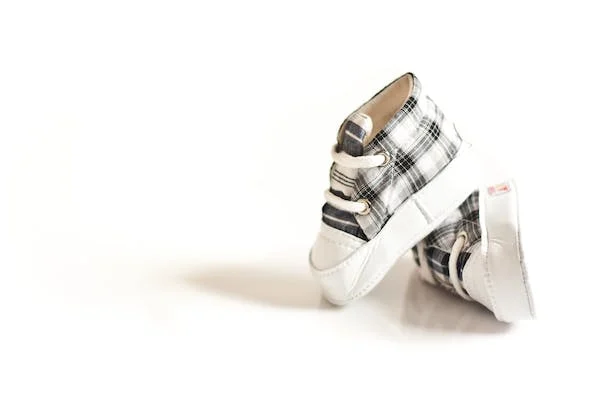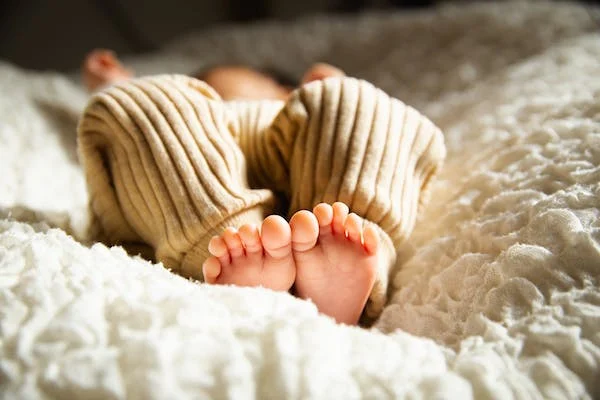LIFE WITH URBAN KIDDIES
Safety features to look for in baby shoes

Introduction
Baby shoes play a crucial role in supporting the delicate and developing feet of infants and toddlers. As they take their first steps and explore the world around them, it is vital to prioritize safety when choosing appropriate footwear. By understanding these key elements, parents and caregivers can make informed decisions to ensure the proper foot development and overall well-being of their little ones.
Facts about Safety Features Soft Sole Slippers
There is a lot of contradicting information regarding how to choose safe soft-sole moccasins. Some parents may be concerned if they see their baby barefoot, however, updated guidelines discuss how going barefoot helps improve arch strength. What should a parent do? It is determined by several factors, including their developmental stage, the activity/location, and the shoes themselves.
Safety features to look for in Soft Sole Slippers
Flexible Soles
One of the primary safety features to consider in baby shoes is the flexibility of the soles. Infants’ feet are still forming and growing, and rigid soles can hinder natural foot movement, potentially leading to foot deformities. Flexible soles, on the other hand, promote proper muscle development and allow for a more comfortable walking experience for the child. The toe area of the shoe should be flexible and allow the toes to move and wiggle comfortably. This is crucial for the development of balance and proper foot function. Soft-sole moccasins should be soft and comfortable.
Non-Slip Outsole
As babies begin to explore different surfaces and environments, they are at risk of slipping and falling. To prevent accidents and ensure stability, look for soft-sole moccasins with non-slip outsoles. These outsoles typically have textured patterns or materials that provide better traction on various surfaces, reducing the chances of slips and trips as the baby learns to walk. While the sole should be flexible, it should also have some grip to prevent slipping and provide stability when your baby starts walking or standing.
Breathable Materials
Proper ventilation is essential to keep the baby’s feet dry and comfortable. Choose soft-sole moccasins made from breathable materials like soft leather, canvas, or mesh. Breathable shoes prevent excessive sweating and the growth of bacteria, reducing the risk of infections and unpleasant odors. Moreover, comfortable and dry feet lead to a happier and more active baby. Choose soft-sole moccasins that have enough space for your baby’s feet to grow and develop. Babies feet grow rapidly, so make sure there’s room for their toes to move freely.
Proper Fit
An ill-fitting shoe can cause discomfort and even hinder the baby’s natural walking progression. It is crucial to select soft-sole moccasins that fit well without being too tight or too loose. Shoes that are too tight can constrict blood circulation and lead to discomfort, while loose-fitting shoes may cause tripping or stumbling. Parents should measure the baby’s feet regularly and refer to the shoe manufacturer’s sizing guide to ensure an appropriate fit. Most infant shoes are available in sizes 0-6 months, 6-12 months, and 12-18 months. It is critical to select the correct size of infant shoes.
Toe Protection
Babies are naturally curious and prone to bumps and falls as they explore their surroundings. Look for baby shoes that offer toe protection, such as reinforced toes or bumper features. These protective elements safeguard the baby’s delicate toes from accidental impacts, providing parents with peace of mind during their little one’s playtime. The fundamental function of soft-sole moccasins is to safeguard your child’s feet from injury and falls. Choose a shoe that will soften your child’s steps as they learn to walk.
Ankle Support
While flexibility is vital in baby shoes, a minimal amount of ankle support can be beneficial, especially for early walkers. Ankle support helps stabilize the baby’s feet and ankles, offering a sense of security as they learn to balance and walk. However, it is crucial not to overdo ankle support, as babies’ feet need room to grow and develop naturally. To help with walking development, choose shoes with lightweight, flexible soles. Most brands have pre-walkers that are super-soft and actually fine for the first few months of walking (according to the parents we spoke with).

Velcro or Elastic Closures
The shoes must be simple to put on and take off, especially if your youngster is just learning to walk. Soft-sole moccasins with laces or straps should be avoided since they can be difficult to manage. Putting shoes on a wiggly and active baby can be a challenge. Opt for baby shoes with Velcro straps or elastic closures, as they make it easier to put on and take off the soft-sole moccasins. These adjustable closures also allow for a more customized fit, ensuring that the shoes stay securely on the baby’s feet during their adventures.
Lightweight Construction
Considering babies’ developing muscles and coordination, it is essential to choose lightweight shoes. Heavy soft-sole moccasins may impede their ability to lift their feet comfortably, leading to fatigue and potential falls. Lightweight shoes promote agility and ease of movement, encouraging the baby to explore and develop their motor skills with confidence. Nonetheless, we all require shoes to manage the possibly uneven, hazardous, or dirty ground we encounter on a daily basis. Choose soft-sole moccasins for your infant that provide weather protection without altering their natural walking technique, such as a pair of baby booties.
Wide Toe Box
A wide toe box in baby shoes allows the baby’s toes to spread naturally inside the shoe. This feature is particularly important as it supports proper foot alignment and helps with balance and stability during walking. The extra space also accommodates the baby’s growing feet and ensures they do not feel cramped or uncomfortable. Most babies walk flat-footed or with their feet turned inwards because muscular strength and ligament stiffness must catch up to other developmental stages. Flat feet almost always improve as the bones develop and the feet strengthen.
Non-Toxic Materials
Babies often put their feet and shoes in their mouths, making it crucial to choose soft-sole moccasins made from non-toxic materials. Ensure that the shoes are free from harmful chemicals such as lead, phthalates, and other potentially harmful substances. Opting for soft-sole moccasins made from certified safe materials protects the baby from potential health risks and allergies. Make certain that the baby shoes are constructed of sturdy materials. They should be able to resist a lot of wear and tear and be simple to clean so that you can keep them looking brand new for as long as feasible.
Quality Construction
To ensure the durability and safety of soft-sole moccasins, pay attention to the quality of the construction. Examine the stitching and overall craftsmanship of the shoes. Well-constructed shoes are less likely to fall apart or pose any hazards such as loose threads that can be a choking hazard.
Advantages of Safety Features on Soft Sole
Safety features on soft-sole baby shoes offer several advantages, providing a secure and protective environment for a baby’s developing feet. Soft-sole moccasins are lightweight and flexible, allowing the baby’s feet to move naturally. This freedom of movement is crucial for healthy foot development and the development of motor skills.
The Importance of Safety Features in Soft Sole
The importance of safety features in baby shoes cannot be overstated, as they directly impact the well-being and development of infants and toddlers. Babies’ feet are delicate and continuously growing, making it essential to choose appropriate footwear that supports their natural foot development and protects them from potential hazards. safety features on soft-sole soft-sole moccasins provide a balanced combination of support, protection, and comfort. They promote natural foot development, reduce the risk of injuries, and give babies the freedom they need to explore and learn to walk with confidence.
Conclusion
Baby shoes are classified into three types: soft sole, firm sole, and pre-walkers. Because they allow newborns’ and infants’ feet to flex and move, soft sole baby shoes are ideal. Hard-sole baby shoes are recommended for babies who are just starting to walk since they provide greater support. Pre-walkers are soft-soled baby shoes with a rubber grip on the bottom to assist the infant in learning to walk.
Selecting the right pair of baby shoes is an essential responsibility for parents and caregivers. By prioritizing safety features like flexible soles, non-slip outsoles, breathable materials, proper fit, toe protection, ankle support, adjustable closures, lightweight construction, wide toe box, non-toxic materials, and quality construction, parents can ensure that their baby’s feet are adequately supported during their early walking stages.
Remember, every baby is unique, and what works well for one child may not suit another. Regularly check the fit of the shoes and observe the baby’s comfort and walking progress. When in doubt, consult with a pediatrician or a shoe fitting expert to make informed decisions for the well-being and safety of the baby’s feet. With the right pair of safe and supportive baby shoes, parents can watch their little ones confidently take their first steps into a world full of wonders.
Table of Contents
Related Blogs
LOCATIONS
-
24B Fredrika Road,
Colombo 06,
00600
Sri Lanka
+94 77 700 3183
+94 76 014 3277
-
180B, Barracks Road,
Mount wellington
Auckland 1060,
New Zealand
+64 27 232 9289
-
8 Lauraville Avenue,
Werribee, Melbourne,
Victoria, 3030
Australia
+61 402 033 932
-
26 Smales drive,
Ajax,
Ontario, L1Z 1G5
Canada
+1 (647) 889-2146

